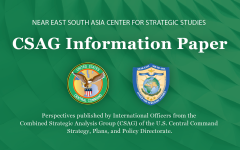Are We Facing a Shift in KSA-US Relations or is it Only a Temporary Weakening?
July 13, 2021 2021-07-13 18:57Are We Facing a Shift in KSA-US Relations or is it Only a Temporary Weakening?
Are We Facing a Shift in KSA-US Relations or is it Only a Temporary Weakening?
By: LTC Dusan Borak, CZE Air Force, CSAG CCJ5
13 July 2021
Introduction:
Despite all the ideological differences between the United States and the Kingdom of Saudi Arabia (KSA or the Kingdom), their partnership has so far been considered very strong, even though it was not based on a common foundation. The stopping support for KSA and the United Arab Emirates (UAE) in the war in Yemen, freezing already prepared arms sales, removing the Houthis from the Foreign Terrorist Organization (FTO) list, and publishing a US Secret Service report on the assassination of journalist Jamal Khashoggi, are just a few key actions with which the new US administration began its four-year term. It is true that with the start of any new administration in the US there are likely changes to the level and depth of relations. The question is whether this US administration will go so far as to disrupt long-standing ties and threaten stability and balance in the region. In order to answer the question, this paper will examine economic, diplomatic, and military relations chronologically.
Key Points:
- Historically, the KSA-US alliance was initially formed to counter Soviet influence in the region. It provided robust Access, Basing, and Overflight (ABO) for the US to provide security and stability while securing national interests.
- The Biden administration has been testing relations with its indefectible ally both diplomatically and militarily.
- The KSA is at turning point to lean to other Great power competitors. A temporary or even complete cessation of trade seems to be the very manner to force KSA to look elsewhere, shifting to others partners of choice.
- Thanks to KSA’s good relations with both China and Russia, KSA has no fundamental problem deepening security cooperation with these two countries.
- The policy change that was sought and implemented with regard to Saudi Arabia at the beginning of the Biden administration’s term seems to be counterproductive. The US seems to have lost more than time, but credibility and confidence.
The opinions and conclusions expressed herein are those of a number of international officers within the Combined Strategic Analysis Group (CSAG) and do not necessarily reflect the views of United States Central Command, not of the nations represented within the CSAG or any other governmental agency.



